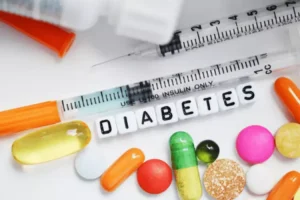In addition to this, there are other ways to help treat the redness and thickened skin of your nose. There are creams and various skincare products that can help with the appearance. Certain skincare products which are medically alcoholic nose approved can help reduce redness caused by flare-ups. Adding to this myth is the term “whiskey nose,” which comes from the way people would drink whiskey. Before drinking, people would sniff the whiskey to enjoy the aroma.

Common symptoms
- Supervised medical detoxification allows those who are dependent on alcohol to withdraw with as little danger and discomfort as possible.
- The condition tends to affect fair-skinned, middle-aged women more often, but anyone of any age or skin tone can develop the condition.
- Later, the nasal skin grows and the tip of the nose becomes larger.
- If you feel that any of our content is inaccurate, out-of-date, or otherwise questionable, please contact at
- Typically, rhinophyma affects the tip of the nose, although the sides and skin on the top of the nose can also be involved.
Alcoholic nose is a slang term used to describe the red, swollen nose that is thought by some to accompany chronic alcohol use. While this stereotype does have some element of truth to it, there is some debate on how much alcohol actually affects the appearance of your nose. At this time, doctors are not exactly sure what causes rhinophyma.
How Rhinophyma Affects Your Nose
If you are in a group at higher risk and develop flu symptoms, contact your doctor early in your illness. While there are no severe side effects of alcoholic nose, the main side effect is their physical appearance. Alcoholic nose does not prevent someone from breathing or give them any trouble in their day-to-day life.
Does Alcoholic Red Nose Go Away?
- Using alcohol heavily, especially over a long period of time, can have a devastating effect on your health.
- In the early stages of rhinophyma, a person may experience excessive facial flushing.
- Your doctor will treat early rhinophyma with oral medications, such as antibiotics or isotretinoin.
- The shoulders and chest are also susceptible to looking more flushed or red after drinking alcohol.
- Additionally, heavy alcohol use can also dehydrate the body, including the nasal membranes, making them more fragile and prone to bleeding.
If you’re worried about alcohol consumption leading to drinker’s nose or rhinophyma, you may also show signs of alcohol abuse. Given its name—alcoholic nose—it’s not hard to figure out that there was once thought to be a connection between alcohol abuse and a large, red, and bulbous nose. As health care research found, rhinophyma is not directly attributed to alcohol.

Substance Abuse Treatment
Learn more about drinker’s nose and if drinking alcohol can affect the features of the face. What is commonly called “alcoholic nose” is actually a skin condition called rhinophyma (Greek for “nose growth”). Rhinophyma is in a category of skin conditions known as rosacea, which causes chronic inflammation of the skin. This chronic inflammation is caused by broken blood vessels and sores on or around the nose, causing it to appear red, swollen, and bumpy.
As discussed above, rosacea can be a main contributing factor to redness and flushing of the cheeks. To understand how rosacea can lead to rhinophyma, it’s important to understand what rosacea is, its symptoms, and how it develops. While women can be diagnosed with the condition, it is found much more commonly in men.
- In the past, and even in modern times, rhinophyma was largely considered to be a side-effect of alcoholism or alcohol use disorder.
- Notably, it should not be assumed that someone with this condition suffers from alcohol use disorder.
- Research has not proven that alcohol abuse is the cause of rhinophyma.
- While this stereotype does have some element of truth to it, there is some debate on how much alcohol actually affects the appearance of your nose.
- Rhinophyma — also sometimes referred to as “alcoholic nose” — is a physical condition that many people assume is caused by alcohol use disorder (alcoholism).
- But we do know that drinking can cause more flushing in people with rosacea.

Lascia un commento